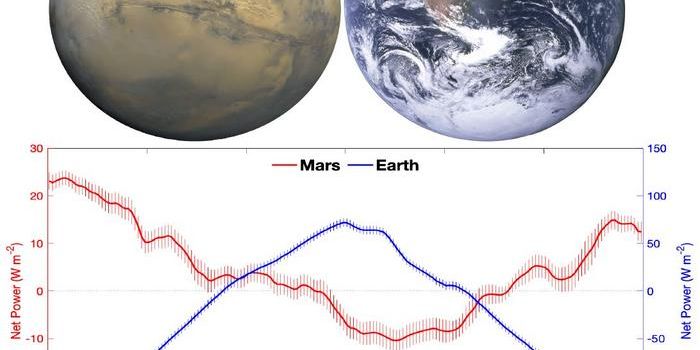Revisiting the Sahara's enigmatic past
As hard as it is to imagine, the rolling dunes that we picture now when we think of the Sahara used to be quite different. The Green Sahara, also known as the African Humid Period, occurred from 14,500 to 5,000 years ago when what we now know as the Sahara desert region was covered not in sand but in vegetation. How did that shift occur and what sustained all that plant growth? New research published in PNAS suggests that, contrary to previous hypotheses, a shifting summer monsoon traveling from the tropics would not have been enough to support the vast green life that abounded for so many years in the region.
Dr. Enno Schefuß of MARUM and Dr. Rachid Cheddadi of the University of Montpellier, France, collaborated to analyze sediments from Morocco containing pollen and leaf waxes. The sediments were taken from a core in Lake Tislit in the High Atlas Mountains, where pollen and refractory plant molecules mixed with marine sediments to form fossils. Analyzing these samples can help scientists reconstruct climate conditions in the past - and determine where exactly the precipitation that fostered the Saraha’s vegetation was coming from.
"Our results are very clear," explains Enno Schefuß, "While the leaf waxes indicate increased rainfall during the African Humid Period, the pollen explicitly reveal that the vegetation was Mediterranean, not subtropical or even tropical." Mediterranean plants can tolerate arid conditions in the summer as long as they receive sufficient rain in the winter. "This strongly suggests that the monsoon reconstructions of previous studies need to be reconsidered."
After discovering these findings, the team designed a mechanistic vegetation model to test out there new theory of how the Green Sahara’s climate maintained itself: "We have winter rain on the northern margin of the Sahara, the monsoon on the southern margin, and between the two areas an overlap of the two rain systems which provides rains there during both summer and winter, albeit rather sparsely," explains Dr. Cheddadi. The researchers point out that it would be necessary for the region to receive at least two rainy seasons in order to support a continuous vegetation cover like that has been documented.
This new understanding of how the Green Sahara formed could inform our knowledge of not only our planet’s climate history, but also our climate future. The team plans to continue their investigations with a mission to retrieve further high-resolution sediment archives from deposits off Morocco with the Research Vessel METEOR.
Sources: PNAS, Science Daily








